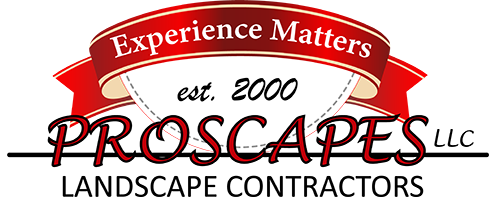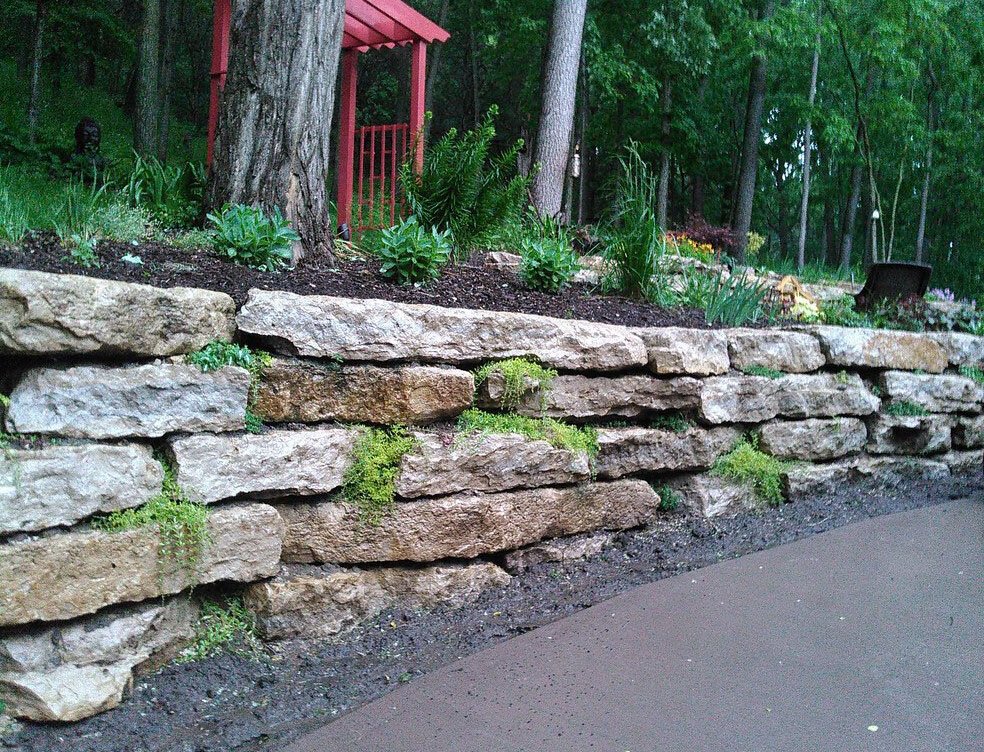How to Choose Wall Stone for Your Retaining Wall in Monona and Madison WI Areas
While choosing wall materials is one of the most exciting parts of retaining wall design, there are many factors to consider that will ensure that the wall will stand the test of time, do its job, and of course remain a focal point in your landscape. Here are our tips for how to choose wall stone for your retaining wall in Monona and Madison, WI, areas.
Practical Considerations
The purpose of a retaining wall is to hold back the soil. However, walls can range from small dry-stacked walls that define a plant bed, to a series of terraces to add usable space to a steeply sloped property, to tall walls that help control erosion. Each of these will have different stresses, and will therefore require different materials.
When it comes to functional retaining walls (as opposed to purely decorative walls) the most important consideration is wall height. Stone walls, whether dry-stack or mortared, should be no higher than 3 or 4’ tall if they are not reinforced.
Another consideration is setback or the slope of the wall that counters the immense pressure from behind the wall. In general, concrete wall blocks are designed to join together to create a pre-set setback. Natural stone isn’t designed with interlocking joints, so it’s better suited for vertical walls (which will need extra reinforcement if used for structural purposes).
Gravity walls utilize the weight of the materials to hold back soil behind them. Stone blocks, large concrete blocks, or cast-in-place concrete are the materials of choice. These walls lean backward toward the soil and use their mass to resist pressure from the soil. Gravity walls are typically shorter than 4’ high.
As you can see, choosing the right wall isn’t just a matter of aesthetics. If the wall comes as a system (such as a concrete core that is faced with natural stone or concrete veneers) then your installer should work with the manufacturer to ensure the wall doesn’t exceed height or load limits.
Design Considerations
Once you’ve decided on the right primary material (either natural cut stone, concrete wall blocks, or concrete blocks designed to be clad with a veneer) then you can enter the more fun stage of choosing the materials you will actually be looking at.
Stone can come in thin slabs which are ideal for dry-stack (non-mortared) walls; this is purely decorative and isn’t designed to be sat on. Or, stone can come in larger blocks that can be dry-stacked or mortared. If you want a wall you can sit on, or if it’s for structural use, be sure to install stone as a mortared wall.
Concrete wall blocks are designed to fit together either for setback or vertical applications, and there are many styles to choose from including those that will give you the look of natural stone. These are designed to be installed mortarless, but because they fit together like puzzle pieces, they won’t shift under load and can be used for structural applications.
The third option is to choose concrete blocks that will then be clad with natural stone or manufactured stone veneer. These are typically sold as wall systems and may be used for lighter structural applications as well as purely decorative (wall veneers can also be used to tie various elements together, such as an outdoor kitchen, pillars, and the retaining wall).
Walls are tough, but they have to be well-built to do the intended job. Connect with us today and let us help you choose the best wall materials for your use!
Related: 7 Favorite Hardscape Materials According to Landscapers Near Me in McFarland, WI
About the Author
With over two decades in business and maintaining an A+ rating by the Better Business Bureau the entire time, Proscapes LLC is a leading landscape company in the Madison, WI, area. As a Unilock Authorized Contractor, we are recognized as the best-of-the-best in our craft—earning numerous awards along the way.

